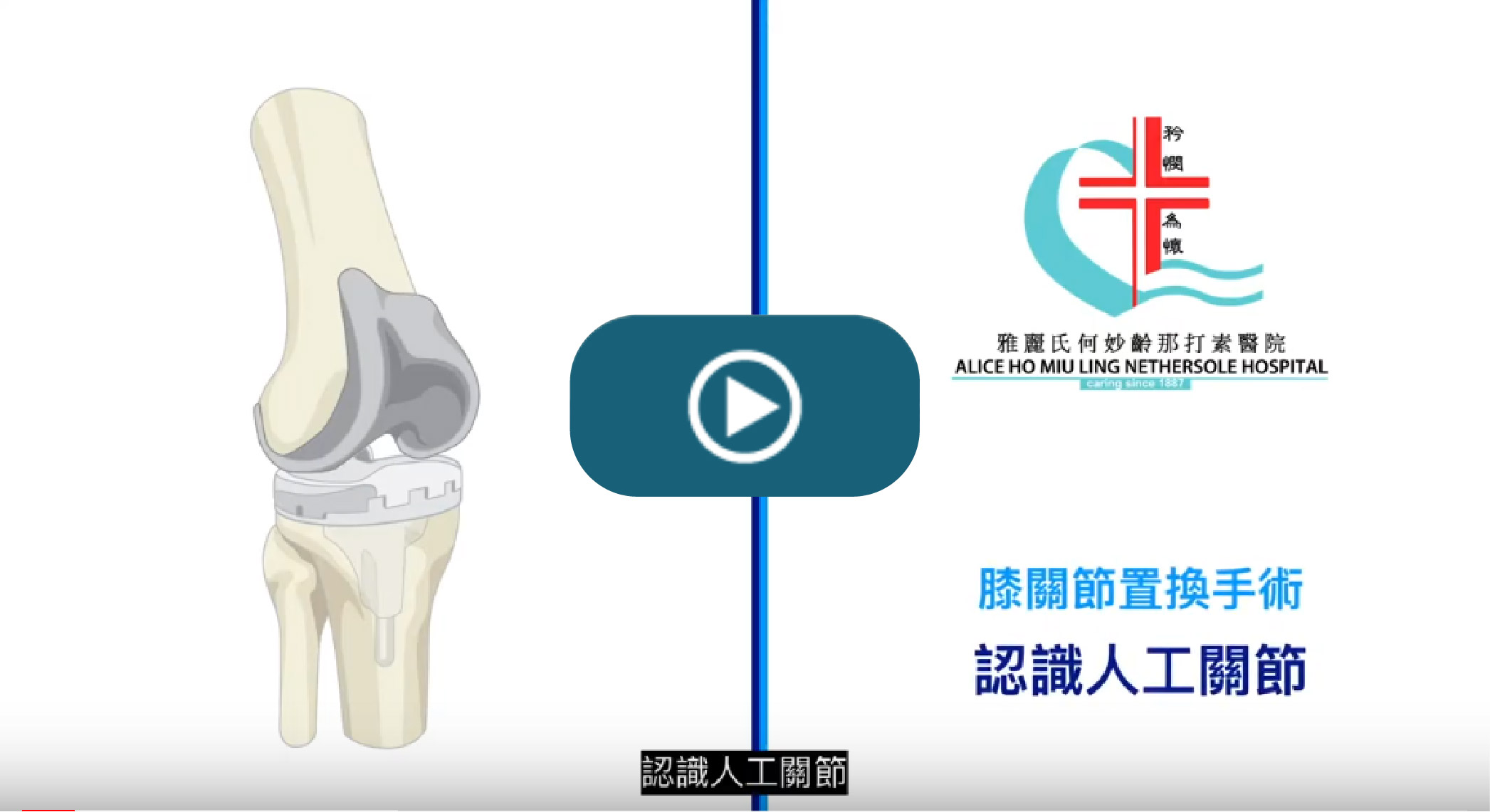Understanding Knee Replacement
Educational Video
(Chinese version only)
What is Knee Arthritis ?
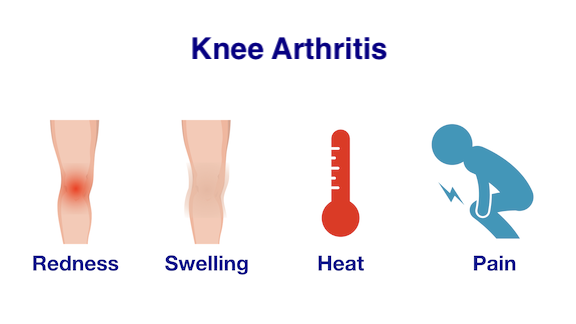
Knee arthritis, which can be caused by degeneration, inflammation, and infection commonly presents with swelling, pain and feeling of warmth in the joint.
What is Knee Osteoarthritis?
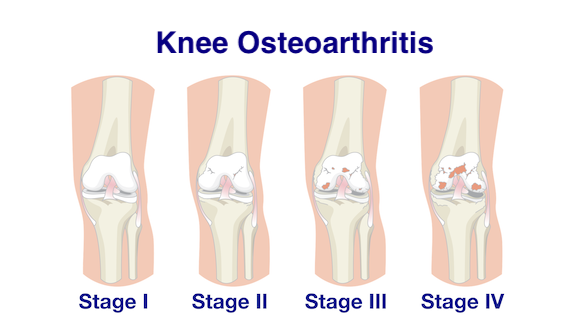
Knee osteoarthritis is a condition that the cartilage inside the knee joint is constantly worn away throughout the years. Other components including the muscles, ligaments, and bone around the knee will also be affected.
Injury, inflammatory disease like rheumatoid arthritis and gout, and knee joint infection can damage any intra-articular structure leading to knee arthritis and secondary degeneration.
Osteoarthritis of the knee is divided into four stages. Stage 4 is considered as severe osteoarthritis and cartilage degeneration is advanced.
Knee Prosthesis
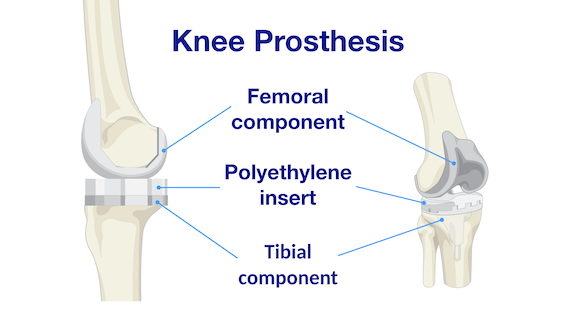
Knee Prosthesis
Total knee prosthesis is composed of femoral, tibial and patellar component.
Partial knee prosthesis can be used to replace the damaged inner or outer compartment of knee joint. It is composed of femoral and tibial implants. When the damage is confined to the patello-femoral joint, it can be replaced with the one with patellar and femoral implants.
For an artificial joint, the femoral implant is made of alloy metal, e.g. cobalt-chromium alloy. The tibial implant is made of polyethylene, which is commonly known as plastic, with a metal alloy base. The patellar implant is made of polyethylene. With this combination, the wear rate is relatively low and hence the artificial joint becomes more durable. Besides, cement is also commonly used for stabilizing the artificial joint.
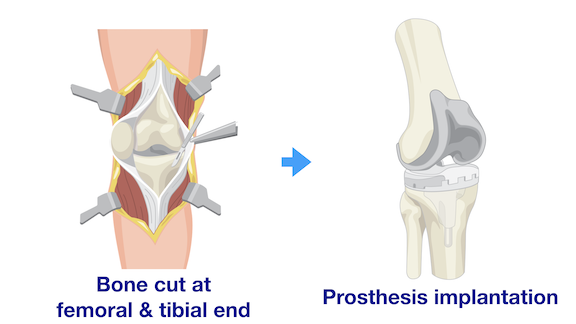
Operation Procedure
- A vertical incision is made over the front of knee joint.
- Excessive synovium or bony spur is removed.
- The distal end of femur is cut to fit the femoral implant.
- The proximal end of tibia is cut to fit the tibial implant.
- The femoral and tibial metal implants are fixed with cement or non-cement method. Tibial plastic is inserted. The alignment, stability and mobility of the knee joint are examined.
- If there is clinical need, the surgeon will cut the back side of patella and then fix the patella plastic implant with cement.
- A drainage tube may be placed near the wound, and wound is closed.
- The operative site is dressed with bandage.
Surgical Risks and Complications
General Complications
- Wound infection
- Post-operative chest infection
- Myocardial infarction
- Stroke
Surgical Risks and Complications
- Bleeding
- Nerve and vessels injury
- Prosthetic joint infection
- Deep vein thrombosis and pulmonary embolism
- Joint stiffness
- Joint dislocation

Disclaimer
The Department of Orthopaedics and Traumatology and the Physiotherapy Department of the Alice Ho Miu Ling Nethersole Hospital would try to ensure the accuracy of information provided on the website. The information contained in the videos and other content on the website has been made available for reference only, and is not intended to be a substitute for diagnosis or prevention of any disease. If any person feels unwell, please seek medical advice promptly to receive timely and appropriate treatment. If you have any questions about the video content and other information on the website, please consult a registered doctor or nurse.
The Alice Ho Miu Ling Nethersole Hospital hereby disclaims any and all liability to any party for any direct, indirect, implied, special, incidental or other consequential damages arising directly or indirectly from any use of the video content and other information, which are provided as are, and without warranties.
Copyright © 2020 The Physiotherapy Department of the Alice Ho Miu Ling Nethersole Hospital. All rights reserved.
¡@


